John Ruskin - Ariadne Florentina - Six Lectures on Wood and Metal Engraving
Здесь есть возможность читать онлайн «John Ruskin - Ariadne Florentina - Six Lectures on Wood and Metal Engraving» — ознакомительный отрывок электронной книги совершенно бесплатно, а после прочтения отрывка купить полную версию. В некоторых случаях можно слушать аудио, скачать через торрент в формате fb2 и присутствует краткое содержание. Жанр: foreign_home, literature_19, visual_arts, foreign_antique, на английском языке. Описание произведения, (предисловие) а так же отзывы посетителей доступны на портале библиотеки ЛибКат.
- Название:Ariadne Florentina: Six Lectures on Wood and Metal Engraving
- Автор:
- Жанр:
- Год:неизвестен
- ISBN:нет данных
- Рейтинг книги:4 / 5. Голосов: 1
-
Избранное:Добавить в избранное
- Отзывы:
-
Ваша оценка:
- 80
- 1
- 2
- 3
- 4
- 5
Ariadne Florentina: Six Lectures on Wood and Metal Engraving: краткое содержание, описание и аннотация
Предлагаем к чтению аннотацию, описание, краткое содержание или предисловие (зависит от того, что написал сам автор книги «Ariadne Florentina: Six Lectures on Wood and Metal Engraving»). Если вы не нашли необходимую информацию о книге — напишите в комментариях, мы постараемся отыскать её.
Ariadne Florentina: Six Lectures on Wood and Metal Engraving — читать онлайн ознакомительный отрывок
Ниже представлен текст книги, разбитый по страницам. Система сохранения места последней прочитанной страницы, позволяет с удобством читать онлайн бесплатно книгу «Ariadne Florentina: Six Lectures on Wood and Metal Engraving», без необходимости каждый раз заново искать на чём Вы остановились. Поставьте закладку, и сможете в любой момент перейти на страницу, на которой закончили чтение.
Интервал:
Закладка:
38. Here, then, are two definite ethical characters in all engraved work. It is Athletic; and it is Resolute. Add one more; that it is Obedient;—in their infancy the nurse, but in their youth the slave, of the higher arts; servile, both in the mechanism and labor of it, and in its function of interpreting the schools of painting as superior to itself.
And this relation to the higher arts we will study at the source of chief power in all the normal skill of Christendom, Florence; and chiefly, as I said, in the work of one Florentine master, Sandro Botticelli.
LECTURE II
39. From what was laid before you in my last lecture, you must now be aware that I do not mean, by the word 'engraving,' merely the separate art of producing plates from which black pictures may be printed.
I mean, by engraving, the art of producing decoration on a surface by the touches of a chisel or a burin; and I mean by its relation to other arts, the subordinate service of this linear work, in sculpture, in metal work, and in painting; or in the representation and repetition of painting.
And first, therefore, I have to map out the broad relations of the arts of sculpture, metal work, and painting, in Florence, among themselves, during the period in which the art of engraving was distinctly connected with them. 4 4 Compare "Aratra Pentelici," § 154.
40. You will find, or may remember, that in my lecture on Michael Angelo and Tintoret I indicated the singular importance, in the history of art, of a space of forty years, between 1480, and the year in which Raphael died, 1520. Within that space of time the change was completed, from the principles of ancient, to those of existing, art;—a manifold change, not definable in brief terms, but most clearly characterized, and easily remembered, as the change of conscientious and didactic art, into that which proposes to itself no duty beyond technical skill, and no object but the pleasure of the beholder. Of that momentous change itself I do not purpose to speak in the present course of lectures; but my endeavor will be to lay before you a rough chart of the course of the arts in Florence up to the time when it took place; a chart indicating for you, definitely, the growth of conscience, in work which is distinctively conscientious, and the perfecting of expression and means of popular address, in that which is distinctively didactic.
41. Means of popular address, observe, which have become singularly important to us at this day. Nevertheless, remember that the power of printing, or reprinting, black pictures ,—practically contemporary with that of reprinting black letters ,—modified the art of the draughtsman only as it modified that of the scribe. Beautiful and unique writing, as beautiful and unique painting or engraving, remain exactly what they were; but other useful and reproductive methods of both have been superadded. Of these, it is acutely said by Dr. Alfred Woltmann, 5 5 "Holbein and His Time," 4to, Bentley, 1872, (a very valuable book,) p. 17. Italics mine.
—
"A far more important part is played in the art-life of Germany by the technical arts for the multiplying of works; for Germany, while it was the land of book-printing, is also the land of picture-printing. Indeed, wood-engraving, which preceded the invention of book-printing, prepared the way for it, and only left one step more necessary for it . Book-printing and picture-printing have both the same inner cause for their origin, namely, the impulse to make each mental gain a common blessing. Not merely princes and rich nobles were to have the privilege of adorning their private chapels and apartments with beautiful religious pictures; the poorest man was also to have his delight in that which the artist had devised and produced. It was not sufficient for him when it stood in the church as an altar-shrine, visible to him and to the congregation from afar; he desired to have it as his own, to carry it about with him, to bring it into his own home. The grand importance of wood-engraving and copperplate is not sufficiently estimated in historical investigations. They were not alone of use in the advance of art; they form an epoch in the entire life of mind and culture. The idea embodied and multiplied in pictures became like that embodied in the printed word, the herald of every intellectual movement, and conquered the world."
42. "Conquered the world"? The rest of the sentence is true, but this, hyperbolic, and greatly false. It should have been said that both painting and engraving have conquered much of the good in the world, and, hitherto, little or none of the evil.
Nor do I hold it usually an advantage to art, in teaching, that it should be common, or constantly seen. In becoming intelligibly and kindly beautiful, while it remains solitary and unrivaled, it has a greater power. Westminster Abbey is more didactic to the English nation, than a million of popular illustrated treatises on architecture.
Nay, even that it cannot be understood but with some difficulty, and must be sought before it can be seen, is no harm. The noblest didactic art is, as it were, set on a hill, and its disciples come to it. The vilest destructive and corrosive art stands at the street corners, crying, "Turn in hither; come, eat of my bread, and drink of my wine, which I have mingled."
And Dr. Woltmann has allowed himself too easily to fall into the common notion of Liberalism, that bad art, disseminated, is instructive, and good art isolated, not so. The question is, first, I assure you, whether what art you have got is good or bad. If essentially bad, the more you see of it, the worse for you. Entirely popular art is all that is noble, in the cathedral, the council chamber, and the market-place; not the paltry colored print pinned on the wall of a private room.
43. I despise the poor!—do I, think you? Not so. They only despise the poor who think them better off with police news, and colored tracts of the story of Joseph and Potiphar's wife, than they were with Luini painting on their church walls, and Donatello carving the pillars of their market-places.
Nevertheless, the effort to be universally, instead of locally, didactic, modified advantageously, as you know, and in a thousand ways varied, the earlier art of engraving: and the development of its popular power, whether for good or evil, came exactly—so fate appointed—at a time when the minds of the masses were agitated by the struggle which closed in the Reformation in some countries, and in the desperate refusal of Reformation in others. 6 6 See Carlyle, "Frederick," Book III., chap. viii.
The two greatest masters of engraving whose lives we are to study, were, both of them, passionate reformers: Holbein no less than Luther; Botticelli no less than Savonarola.
44. Reformers, I mean, in the full and, accurately, the only, sense. Not preachers of new doctrines; but witnesses against the betrayal of the old ones, which were on the lips of all men, and in the lives of none. Nay, the painters are indeed more pure reformers than the priests. They rebuked the manifest vices of men, while they realized whatever was loveliest in their faith. Priestly reform soon enraged itself into mere contest for personal opinions; while, without rage, but in stern rebuke of all that was vile in conduct or thought,—in declaration of the always-received faiths of the Christian Church, and in warning of the power of faith, and death, 7 7 I believe I am taking too much trouble in writing these lectures. This sentence, § 44, has cost me, I suppose, first and last, about as many hours as there are lines in it;—and my choice of these two words, faith and death, as representatives of power, will perhaps, after all, only puzzle the reader.
over the petty designs of men,—Botticelli and Holbein together fought foremost in the ranks of the Reformation.
Интервал:
Закладка:
Похожие книги на «Ariadne Florentina: Six Lectures on Wood and Metal Engraving»
Представляем Вашему вниманию похожие книги на «Ariadne Florentina: Six Lectures on Wood and Metal Engraving» списком для выбора. Мы отобрали схожую по названию и смыслу литературу в надежде предоставить читателям больше вариантов отыскать новые, интересные, ещё непрочитанные произведения.
Обсуждение, отзывы о книге «Ariadne Florentina: Six Lectures on Wood and Metal Engraving» и просто собственные мнения читателей. Оставьте ваши комментарии, напишите, что Вы думаете о произведении, его смысле или главных героях. Укажите что конкретно понравилось, а что нет, и почему Вы так считаете.
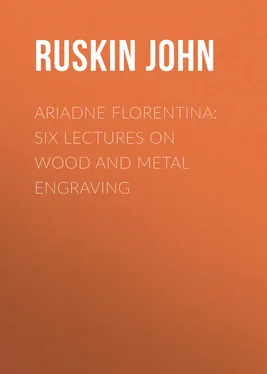

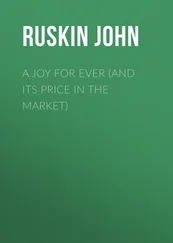
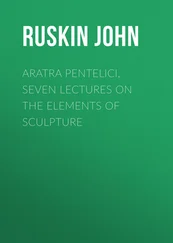
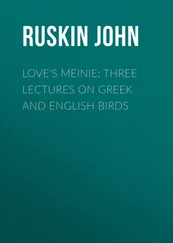
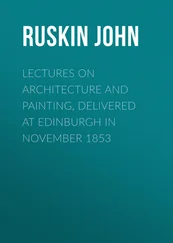
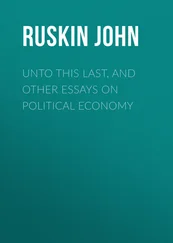
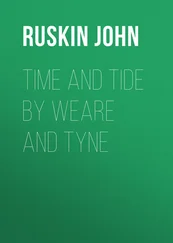
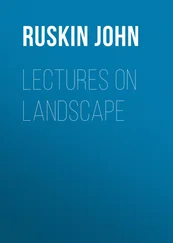

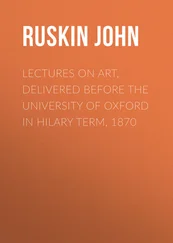
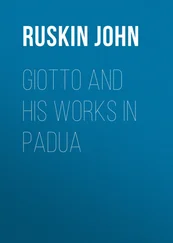
![John Bruce - The Lettsomian Lectures on Diseases and Disorders of the Heart and Arteries in Middle and Advanced Life [1900-1901]](/books/749387/john-bruce-the-lettsomian-lectures-on-diseases-and-disorders-of-the-heart-and-arteries-in-middle-and-advanced-life-1900-1901-thumb.webp)